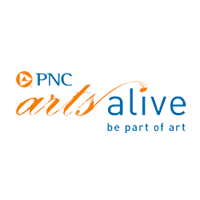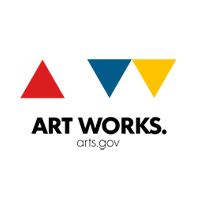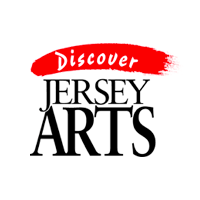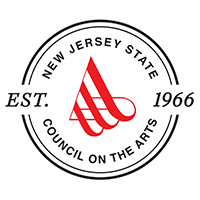Crafting Crowns with Laya’s Touch
Crafting Crowns with Laya’s Touch
This Black History Month, the Perkins Folklife Newsletter celebrates Black textured hair and beauty. Paulette Young caught up with two of our Crafting Crowns “Queens,” participants in an ongoing Perkins’ Folklife Center’s fieldwork project that preserves African American hair traditions in Southern New Jersey. Crafting Crowns highlights the art and craft related to African American hair artistry including braids, twists, cornrows and locs. Crafting Crowns also explores the role that the hair salon plays as a site that cultivates and maintains cultural traditions while promoting community. Dr. Young takes it from here.
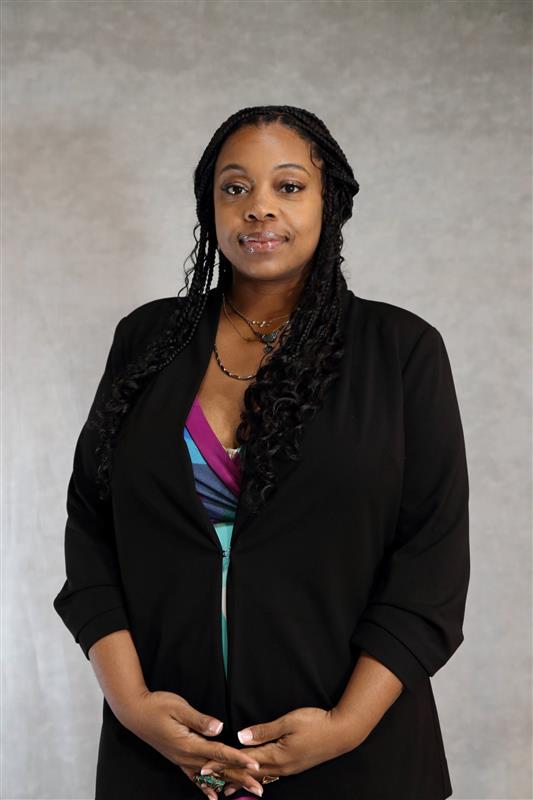
Talaya Loftin of Laya’s Touch-Burlington Photograph: Michael Capuano
The first “Queen” I’ll introduce today is Talaya Loftin, holistic hair care specialist and owner and operator of the independent mobile hair center Laya’s Touch based in Burlington, New Jersey. The civic-minded Ms. Loftin kicked off the New Year by getting sworn in as the first Black woman Council Member at Large for the New Jersey township of Florence, where she grew up and still lives with her three daughters. Below are excerpts from our conversation.
PY: You were a state employee in a secure job with benefits and a pension. What prompted you to leave to start a new career in hair care?
TL: I was working 17-hour days helping to coordinate security measures for the State of New Jersey Judiciary, with no end in sight.
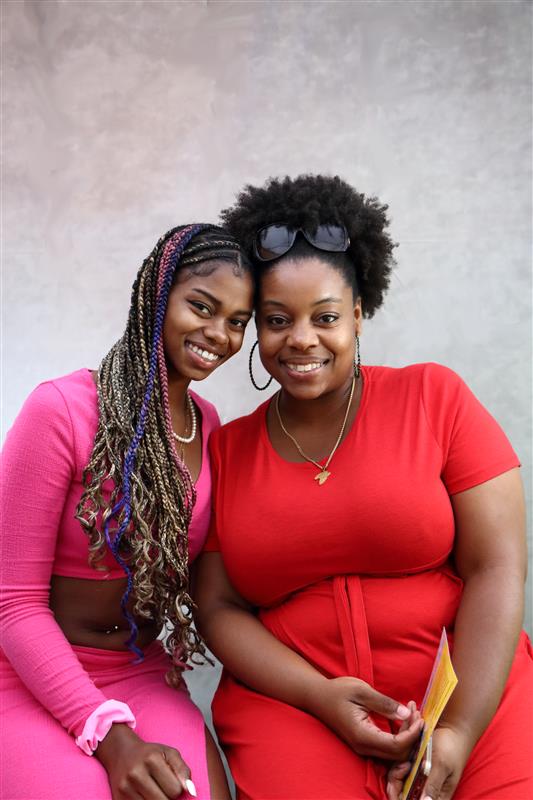
Talaya and Daughter Olivia Photograph: Michael Capuano
My workload had tripled so I was hardly present for my children. [COVID-19 health] threats had increased exponentially and mental health-wise, it was time to come to an end.
PY: When you first started the business, did you have support for this career change?
TL: Not really. I had people in my community who knew I could braid. I have three girls and I’ve always braided their hair as well as other kids in the community. I always had referrals from friends, so the extra change was good. But outside of the few people who knew that I could do it, no. I just took a leap because I knew that I could do it.
PY: You named your business “Laya’s Touch.” What is the significance of the word “touch” for you?
TL: My touch is what makes me different from most traditional braiders. Because I can feel what you need from my touch. I must feel your hair to get the energy from it. By feeling the hair by touch, I can read what you are going through.
PY: We have spoken quite a bit about protective hair styles, and they’re something that I hear more and more people discuss. How would you define a protective hair style and are there some styles that are more protective than others?
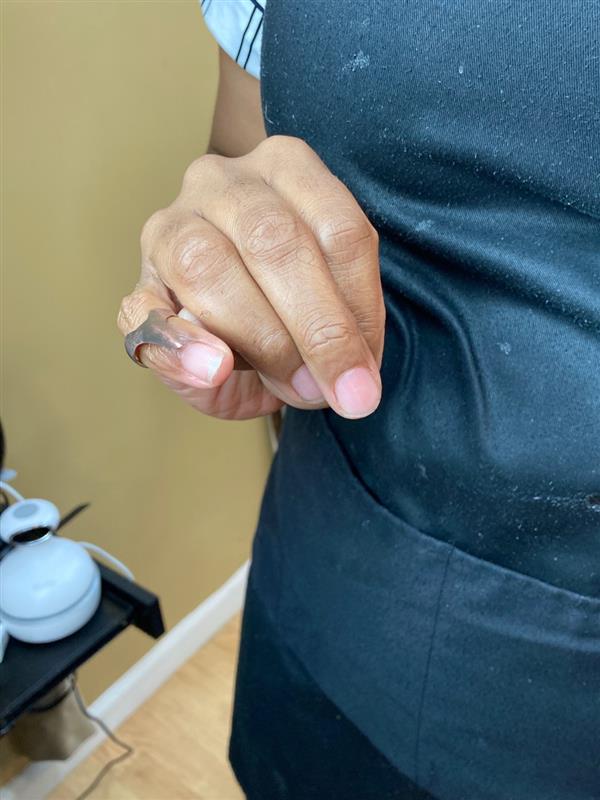
Talaya’s Hair Parting Tool – Photograph: Paulette Young
TL: Protective hairstyles must breathe. You have your braids, which is the most protective hairstyle because it’s three strands of hair woven together. It’s going to be sturdy. Then you have a twist, which is two strands. And then you have feed-in-braids and conical cornrows, and there’s different ways to do each style. The degree to which a style is the most “protective” is determined by how much hair you add into each of those styles. If you add in hair it’s more protective because it’s sealing the hair within the braid. The weight of synthetic hair holds down your natural hair so it doesn’t frizz and become matted. Each of my styles comes with a maintenance plan regimen. There is no style that doesn’t require some type of maintenance.
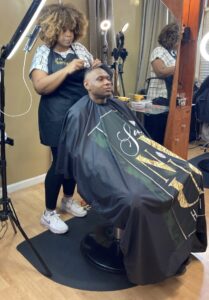
Talaya Loftin styling client at Laya’s Touch
Photograph by Paulette Young
PY: What are the most common issues your clients face with maintaining their hair?
TL: Dryness, especially in the winter months. The most common mistake that I find that people in my chair are making is putting oil on top of dry hair. If I could get this on a billboard: Oil does not hydrate your hair! Oil acts as a sealant, which will
seal in whatever you are putting it on top of. If you put oil on hydrated hair—and the only thing that can hydrate your hair is water—you are sealing in the water.
If you’re not properly moisturizing your hair, then it’s always going to be dry. If you’re not adding enough water to your hair, it becomes brittle. Because [Black] hair can be coily or kinky, every point where it coils or kinks is a point of potential breakage. That’s why it’s important to get a consultation.
PY: You shared how when your first daughter was young, she had a hard time accepting her hair. You designed an array of styles to encourage her to appreciate the natural beauty of her hair. How do you continue teaching your daughters about beauty, joy and self-assurance as they have gotten older?
TL: It’s truly a knowledge of self. Teaching them their history, explaining from which they come from has changed the way in which they perceive themselves. Hair is their lineage, their crown to be proud of. That was the thing that has helped my girls on their journey.
PY: Can you explain a little more about what it means for us to take pride in our “crowns”?
TL: We sometimes call our hairstyles “crowns” because of the beauty and the spiritual power that our hair holds. My favorite Bible verse is Psalms 8:5, which says, “For thou hath made him a little lower than the angels and has crowned him with glory and honor.” So [hair] is literally the thing that God has crowned you with. If you are connected with your crown in a spiritual way, you will stay in alignment.
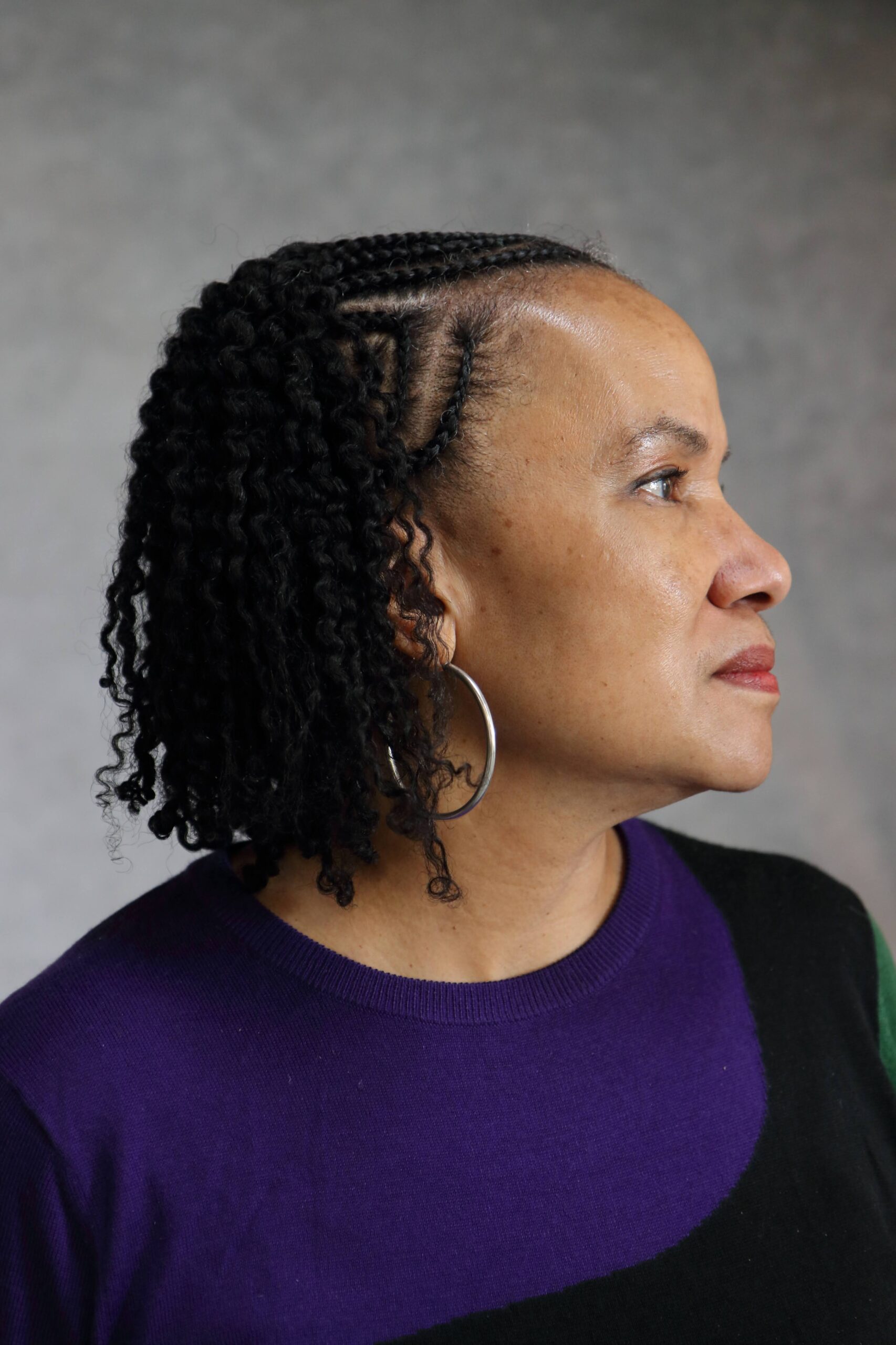
Paulette Young – Photograph: Michael Capuano
At my salon, Laya’s Touch, I get to walk in my purpose daily. I encourage others to see themselves as beautiful in their natural state. I maintain a high energy of love, understanding and healing. It is often our only safe space to be holy and naturally in yourself.
Love is needed, encouragement is needed, and reassurance is needed. I am working to take care of my clients in ways that the beauty industry has not.
PY: Are you doing anything special to commemorate Black History Month?
TL: We get an extra day [of February] this year! But every day is Black History Month in my chair. I’m not doing anything different because I celebrate Black history every single day!
PY: If you enjoyed this interview, I hope you’ll join me next time for a conversation with another inspiration hair artist, Atiya Johnson, owner of a thriving cosmetology school and beauty salon.
Sidebar: My Warrior Woman Hairstyle.
As a cultural anthropologist, I value “participant observation” research. So as part of my research for Crafting Crowns, to immerse myself in the full client experience, I volunteered to spend some time in the salon chair offering my own head as a canvas for these stylists’ skills. Each stylist began with a hair consultation, followed by individualized shampoo, conditioning, and therapeutic hair treatments including hair steam and scalp massage. To create the final hairstyles, some visits required many hours in the chair; others a full day! My day at “Laya’s Touch” yielded in an incredible new sculpted hairstyle as well as an astonishing revelation—my natural curl pattern, which I had not seen since I was five or six years old!
“The Modern Warrior” was Talaya’s name for this style. The “Modern Warrior” is trailblazer who is a warrior in spirit, but who takes care of everyone. It is Talaya’s representation of what such a warrior might wear in daily battle. The front has winding pathways that remind me of the winding road that we many of us take to our destination.
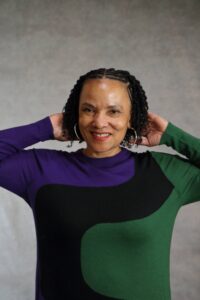
Paulette Young Photographed by Michael Capuano
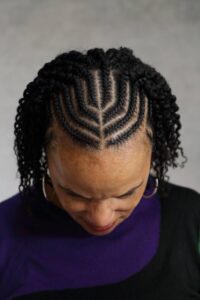
Paulette Young Photographed by Michael Capuano
About Our Contributing Writer/Editor
Paulette Young, Ph.D. is a cultural anthropologist, curator and independent scholar in the visual arts and artistic cultural practices of communities in Africa and the African Diaspora. Her research centers on the historical and contemporary roles of global dress, adornment and style as an expressive artistic and cultural form. She received her Ph.D. from Columbia University.
C





